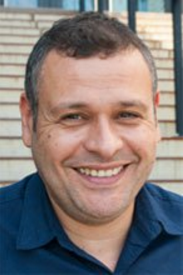Network Slicing in 5G: Enablers and Challenges
Conferencia en Inglés con Traducción Simultanea.

El Capítulo Argentino, el Capítulo estudiantil del IEEE ComSoc y de la Secretaria de Asuntos Universitarios de la UTN.BA invitan a participar de la Charla sobre Network Slicing in 5G: Enablers and Challenges.
Summary of the lecture
Network Slicing (NS) is being seen as the 5G solution, allowing to support different types of service while sharing the same infrastructure. Network Slicing relies on the recent advances in Network softwarization, represented by Software Defined Networking (SDN) and Network Function Virtualization (NFV), to create virtual substrate of the physical infrastructure to elastically adapt the infrastructure to the need of services. Indeed, as envisioned in 5G, the network will be opened to vertical industry, and new stakeholders, to deploy other services than those usually deployed in 4G. Examples of such services are automotive driving, eHealth, industry 4.0, IOT.
In this lecture, I will describe the root of NS, by detailing the concepts of SDN, NFV and how they are used to build NS in 5G. I also describe via concrete examples how a NS is instantiated and deployed in 5G Network. Last but not least, I will describe some remaining challenges for NS.
Resumen de la Conferencia:
Network Slicing (NS) está siendo visto como la solución de 5G, permitiendo soportar diferentes tipos de servicio en simultáneo mientras se comparte la misma infraestructura. Network Slicing se basa en los avances recientes en “Network Softwarization”, como el “Software Defined Networking” (SDN) y “Network Function Virtualization” (NFV), lo que permite crear un sustrato virtual de la infraestructura física para adaptarla elásticamente en función de la necesidad de los servicios. De hecho, como fue previsto en 5G, la red se abrirá a la industria y a nuevos sectores interesados para implementar otros servicios distintos de los habitualmente implementados en 4G. Ejemplos de tales servicios son la conducción autónoma, eHealth, industria 4.0, IOT.
En esta conferencia, se describirán las raíces de NS, al detallar los conceptos de SDN, NFV y cómo estos son usados para desarrollar NS en 5G. También se describirá, a través de ejemplos concretos, cómo NS es instanciado y puesto en marcha en la red 5G. Por último, pero no menos importante, se describirán algunos de los desafíos pendientes para NS.
Date and Time
Location
Hosts
Registration
-
 Add Event to Calendar
Add Event to Calendar
- Av. Medrano 951
- Buenos Aires, Distrito Federal
- Argentina C1179AAQ
- Room Number: Aula Magna, Planta Baja, UTN.BA, CABA
- Click here for Map
- Contact Event Host
- Co-sponsored by SAU - UTN.BA
- Starts 24 August 2018 07:00 PM UTC
- Ends 01 October 2018 09:30 PM UTC
- No Admission Charge
- Menu: Miembro IEEE, Miembro IEEE/ComSoc, UTN Docente, UTN Graduado, UTN Estudiante, Otros
Speakers
 Dr. Adlen Ksentini of Communication System, Eurecom
Dr. Adlen Ksentini of Communication System, Eurecom
Network Slicing in 5G: Enablers and Challenges
Biography:
Dr. Adlen Ksentini (SM’14) received the M.Sc. degree in telecommunication and multimedia networking from the University of Versailles Saint-Quentin-en-Yvelines, and the Ph.D. degree in computer science from the University of Cergy-Pontoise, in 2005, with a dissertation on QoS provisioning in the IEEE 802.11-based networks. From 2006 to 2015, He worked at the University of Rennes 1, as an assistant Professor. During this period, He was a member of the Dionysos Team with INRIA, Rennes. Since March 2016, he has been working as assistant Professor in the Communication systems department of EURECOM. Adlen Ksentini has been involved in several national and European projects on QoS and QoE support in future wireless, network virtualization, cloud networking and mobile networks. He has co-authored over 100 technical journal and international conference papers.
He received the best paper award from the IEEE IWCMC 2016, IEEE ICC 2012 and ACM MSWiM 2005. He has been acting as TPC symposium chair for IEEE ICC 2016, 2017 and IEEE Globecom 2017. He was a Guest Editor of IEEE Wireless Com. Magazine IEEE Com. Magazine, and two ComSoc MMTC letters. He has been on the Technical Program Committee of major IEEE ComSoc, ICC/Globecom, ICME, WCNC, and PIMRC conferences.
Agenda
- Introduction to 5G
- Part 1. Background
- Part 2. Enablers of Network Slicing
- Part 3. Network Slicing
- Conclusion

